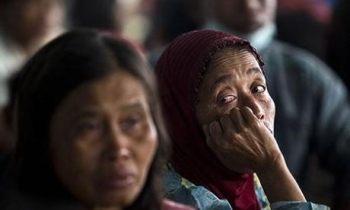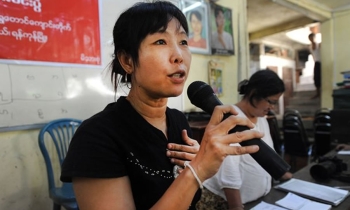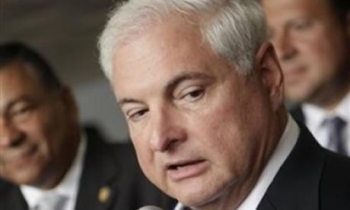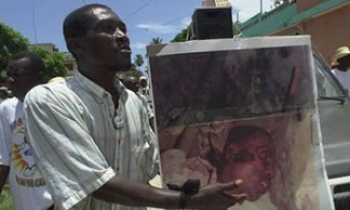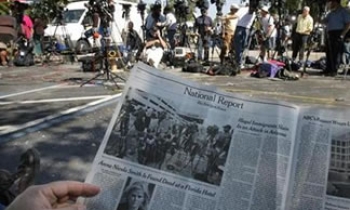The world's media markets are becoming hotter, setting the stage for the Top 100 global marketers to crack the $100 billion level this year. The Top 100, an elite group of marketers that drive just over a quarter of the world's total media and that spend those dollars on three continents or more, notched $93.94 billion in worldwide media in 2004, according to Advertising Age's 19th annual Global Marketing report.

That tally represented growth of 12.1 per cent, the highest vista for the top marketers since their 2.6 per cent decline in trough year 2001. Procter & Gamble Co roared to a worldwide media total of $7.92 billion in '04, up 17.6 per cent, more than doubling the expenditures of the group's runner-up General Motors Corp at $3.92 billion. GM in the process switched places with No 3 Unilever at $3.46 billion, up 2 per cent. The list stretches to No 100, Tokyo-based Shiseido Co at $257 million.
The top-ranked company in India is Unilever with $474.8 million. Others making up the top 10 in India are: Procter & Gamble Co ($201.4 million), Tata Group ($127 million), Paras Pharmaceuticals ($114 million), Maruti Udyog ($100 million), Reckitt Benckiser ($94.6 million), PepsiCo ($91.6 million), the Government of India ($89.3 million), Dabur India ($82.7 million), and Samsung Group ($81.4 million).
The marketers who ultimately became the Top 100 were collated from media lists from 77 countries provided by monitoring services, primarily Nielsen Media Research, TNS Media Intelligence and Ibope. Media totals per country were by gross ad rates. Advertising Age adjusted each market's gross media expenditures to reflect that market's global media volume ranking from ZenithOptimedia. A Top 100 marketer had to have media spending on at least three continents to qualify as "global." Twenty-two marketers spent more than No 100 Shiseido, but lacked the "global" requirement.
P&G's acquisition of Gillette just completed last month gave the personal-care marketer five more brands that draw more than $1 billion-plus in global sales. P&G already had 17 brands of such magnitude, including Wella, which was acquired in 2003. P&G spending ranked No 1 in 24 of the 77 countries surveyed, with 43 per cent of its media tally spent in the US, 31 per cent in Europe and 20 per cent in Asia-Pacific.
GM's sizable media growth can be traced to its huge spending in the US, which claimed 71.4 per cent of its media, much of it behind gas-guzzling SUVs. GM's US spending rose 18 per cent as it put double-digit media growth behind Chevrolet, GMC, Cadillac and GM corporate. Saturn, Pontiac and Buick all dropped in spending. Even with large SUVs losing some of their patina, GM is not paring back on media this year, boosting first-half 2005 spending 20.2 per cent over first-half 2004 in the US
The Anglo-Dutch combine Unilever continued a reorganisation in 2004 that has cut non-core brands and restructured management to separate responsibility for brand development, category management and country and customer development. Ad volume levels have responded with growth of only 2 per cent as Unilever spent 49.7 per cent of its media in Europe, 24.7 per cent in Asia-Pacific and 17.4 per cent in the US The US portion was down 2 per cent from 2003.
The Top 100 needs only 6.5 per cent growth in media this year to reach the century mark. The forces are with them. Revenue growth at WPP Group, Omnicom Group and Publicis Groupe � among them owners of six of the world's top 10 media specialist companies � is up a combined 7.3 per cent through three quarters.

US business is cooking: Corporate profits through first-half 2005 have risen 31.5 per cent after posting a 6.8 per cent gain for 2004, according to the Bureau of Economic Analysis. The US is the geographic volume leader of the Top 100 with 48.8 per cent of its spending. Their US media grew 9 per cent to $45.87 billion.
Europe collected 32.6 per cent of the group's spending as Top 100 media rose 16.5 per cent. Asia-Pacific, accounting for 14 per cent of the total, grew 15 per cent in media, and Latin America, Canada, Africa and the Middle East, collecting the rest, grew an aggregate 18.4 per cent in media. The exchange rate differential between the declining US dollar and the major currencies manufactured a sizable portion of this growth outside the US
The Top 100's electronics, pharmaceuticals, cleaners, automotive and personal care categories each hit double-digit growth in media in '04. Autos, up 12.8 per cent in media, accounted for nearly a quarter of the Top 100's global media dollars. The auto category also drew the largest crowd, 17 Top 100 marketers. Personal care, up 12.7 per cent in spending from nine global marketers, claimed almost onefifth of the group's media.
Telecommunications grew the most of any category, up 33.2 per cent, albeit from only three highly mobile-oriented marketers: Deutsche Telekom, whose spending largely behind T-Mobile rose 38.1 per cent; Vodafone Group, up 35.4 per cent; and France Telecom, with media outlays up 23 per cent, largely to support its Orange brand.
Pharmaceutical advertising is fully US-driven. The group of 11 Top 100 members in the category spent an average 80 per cent of their media in the US, mostly in direct-to-consumer advertising. But the category's US spending has flattened out in first-half 2005 as marketers have come under attack for using ads to create demand beyond the intended market.
China notched the biggest spending gain of any country, up 84.7 per cent from all marketers, and is the reason Asia-Pacific's media volume will eclipse Europe's in 10 years, predicts ZenithOptimedia, noting China next year will pass France, currently the world's fifth-largest media market.
Additionally, as markets in Russia, India and Eastern Europe continue to mature, and the Internet grabs new media expenditures– it represented 5.2 per cent of US media at year-end 2004 and reached almost 6 per cent through August 2005 � global media are poised for strong gains in the near-term at least.

